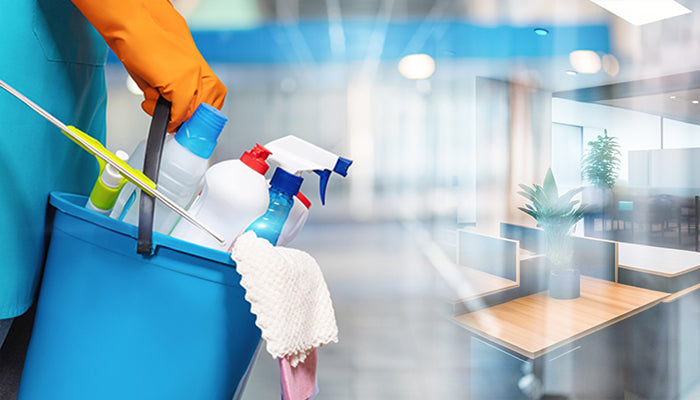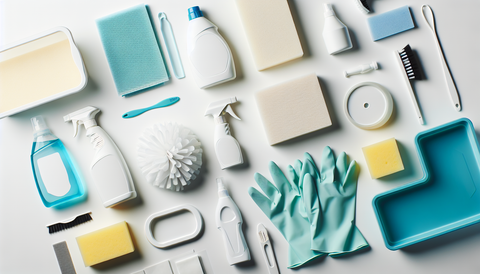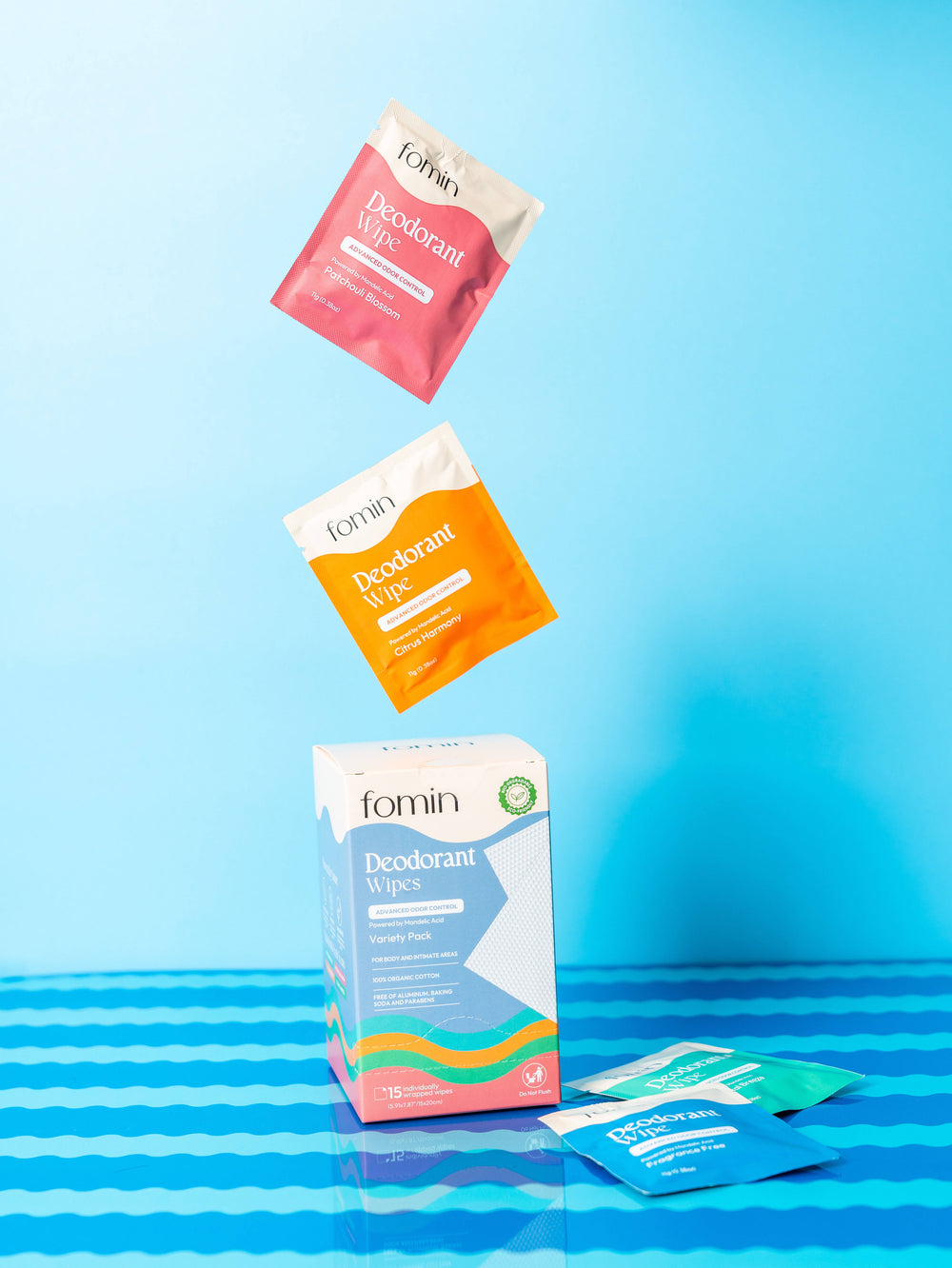
What is The Difference Between Cleaning Disinfecting and Sterilizing
Share
In our daily lives, maintaining a clean and healthy environment is essential for preventing disease and ensuring the well-being of everyone around us. The terms cleaning, disinfecting, and sterilizing are often used interchangeably, but they each represent distinct processes for achieving hygiene.
Understanding the differences between these methods is crucial for applying the appropriate technique in various settings, from our homes to healthcare facilities. This article elucidates what each term means, the specific procedures involved, the contexts in which they are employed, and their overall impact on public health.
Defining Cleaning, Disinfecting and Sterilizing
Understanding the Term 'Cleaning'
Cleaning refers to the process of removing visible dirt, dust, debris, and other impurities from surfaces or objects. This is typically accomplished through the use of water, detergents, soaps, and mechanical action, such as scrubbing or wiping. The primary goal of cleaning is to make an area or item visually clean and to reduce the presence of microorganisms by physically removing contaminants.
However, while cleaning does lower the risk of spreading infections by reducing the number of germs, it does not necessarily kill them. Thus, cleaning is the first step in the overall process of reducing the potential for infection, but it may need to be followed by disinfecting or sterilizing for a more thorough eradication of pathogens.
Defining 'Disinfecting'
Disinfecting takes cleaning a step further by using chemicals to kill germs on surfaces and objects. This process does not necessarily clean dirty surfaces but kills microorganisms that remain after cleaning. Disinfectants are typically used on surfaces that are touched frequently, such as door handles, light switches, and countertops, to prevent the spread of infectious agents.

There are different levels of disinfection - high, intermediate, and low - depending on the type of surface and the specific pathogens that need to be controlled. Disinfectants must be registered with environmental protection agencies and are required to meet certain standards in efficacy against designated pathogens.
An Overview of 'Sterilizing'
Sterilizing is the highest level of decontamination, where all microbial life forms, including bacteria, viruses, fungi, and spores, are destroyed. Sterilization is achieved through a variety of methods, including heat (such as autoclaving), chemicals, irradiation, or filtration. It is essential in settings where the absolute absence of microbes is critical, such as in surgical instruments and other medical devices.
The importance of sterilization cannot be overstated in healthcare settings, as it is vital for preventing healthcare-associated infections (HAIs). Sterilizing processes are strictly monitored and controlled to ensure that objects are free of all microorganisms before they come into contact with patients or sterile areas within hospitals and other medical facilities.
So, back to your question ‘What is the difference between cleaning disinfecting and sterilizing’, the detailed difference highlighted above must have cleared your concerns.
The Process of Cleaning (Difference Between Cleaning and Disinfecting)
Importance of Cleaning in Disease Prevention
Cleaning is the frontline defense in the fight against the spread of infectious diseases. By removing germs and debris from surfaces, cleaning reduces the number of pathogens that can come into contact with individuals and thereby diminishes the risk of disease transmission. Regular cleaning of high-touch areas minimizes the opportunity for germs to transfer from surfaces to hands and then to the nose, mouth, or eyes, where they can cause infections.

Particularly in public spaces and households where individuals suffering from contagious illnesses reside, cleaning becomes an indispensable tool for maintaining a safer environment. By integrating cleaning into routine maintenance, we can uphold basic hygiene standards and provide a foundation for healthier living conditions.
Common Cleaning Methods
Common cleaning methods include sweeping, mopping, vacuuming, dusting, and wiping surfaces with cloths. Depending on the area being cleaned and the type of dirt or debris present, differing techniques and cleaning agents may be used. For instance, abrasive cleaners may tackle hard-to-remove substances, while gentle detergents are preferable for delicate surfaces.
In addition to traditional manual methods, technological advancements have introduced a range of mechanical cleaning devices, such as steam cleaners and power washers, that enhance the effectiveness of the cleaning process. Regardless of the method, it is important to use the right cleaning tools and agents for the specific task to avoid damaging surfaces and to ensure a thorough job. This is the basic difference between all purpose cleaner and disinfectant.
Limitations of Cleaning
While cleaning is essential, it has its limitations. It removes visible contaminants but does not kill germs; therefore, it is not sufficient on its own to prevent the spread of many infectious diseases. In environments where there is a greater risk of infection, such as hospitals or households with sick individuals, cleaning should be followed by disinfection.

Moreover, certain surfaces and materials can harbor germs in crevices or textures that make them difficult to clean thoroughly. In such cases, additional measures, including the use of disinfectants or even sterilization for certain items, may be necessary to ensure a high level of hygiene is maintained.
Concept of Disinfecting
Disinfecting vs Cleaning: What's the Difference?
The primary distinction between cleaning and disinfecting lies in their purposes and outcomes. Cleaning removes dirt and reduces germs, but disinfecting aims to kill the germs left behind after cleaning. Disinfection is particularly important in areas where pathogens are likely to spread, such as bathrooms, kitchens, and areas where someone who has been ill has spent time.
It's important to clean before disinfecting because organic material and dirt can reduce the efficacy of disinfectants. By cleaning first, we remove barriers that might prevent disinfectants from coming into direct contact with the microorganisms they're intended to kill.
Chemicals Used in Disinfecting
There is a wide range of chemicals used in disinfectants, including alcohol, chlorine bleach, quaternary ammonium compounds, hydrogen peroxide, and peracetic acid, among others. Each of these has different levels of effectiveness against various types of pathogens and may be chosen based on the specific needs of the environment being disinfected.

When using disinfectants, it is important to follow the manufacturer's instructions regarding concentration, contact time, and safety precautions. Misuse of disinfectants can lead to incomplete disinfection, can be harmful to human health, or may cause damage to surfaces being treated.
Role of Disinfecting in Contaminant Removal
The role of disinfecting is to provide an additional level of cleanliness by killing microorganisms that can cause disease. By doing so, it significantly lowers the risk of infection, especially in areas where people are at higher risk, such as hospitals, schools, and public transportation.
Disinfecting plays a crucial role during outbreaks of infectious diseases, where rapid and effective action is required to prevent the spread of illness. Properly used, disinfectants can help contain and control the spread of pathogenic microorganisms in the community and healthcare settings.
Sterilizing and its Applications
How Sterilization is Different From Disinfecting and Cleaning
Sterilization differs from cleaning and disinfecting in that it results in the complete elimination of all microbial life, including spores which are highly resistant to other forms of decontamination. While disinfectants kill most viruses, bacteria, and fungi, they may not be effective against all spores or prions. Sterilization ensures that the most resistant forms of life are destroyed, providing a higher guarantee of safety, particularly in sensitive environments.

The rigorous standards of sterilization are necessary in surgical and critical-care settings to prevent infections that could have serious consequences. Therefore, while cleaning and disinfecting are suitable for general hygiene maintenance, sterilization is the method of choice for anything that must be free of all potential contaminants.
Methods Used to Sterilize
There are several methods used to sterilize equipment and surfaces. Moist heat, such as that used in autoclaves, is effective at killing all microbes by coagulating their proteins. Dry heat, which uses higher temperatures, is utilized for materials that might be damaged by moist heat. Chemical sterilants include glutaraldehyde, formaldehyde, and ethylene oxide gas, which are used for heat-sensitive items.
In addition to heat and chemicals, other sterilization methods include radiation, such as gamma rays or electron beams, and filtration for liquids or gases that cannot be heat-sterilized. Each method has its specific applications, advantages, and requirements, and the choice of method depends on the nature of the item to be sterilized and the context of use.
When to Use Sterilizing Over Cleaning and Disinfecting
Sterilization is essential when items must be completely free of all potential pathogens. This level of decontamination is required for invasive medical procedures, in the pharmaceutical industry, and in laboratory settings where sterile conditions are vital. All tools and materials that enter sterile areas of the body, such as surgical instruments, implants, or injection needles, must be sterilized to prevent infections.
For everyday use and in less critical environments, cleaning and disinfecting offer adequate levels of hygiene and infection control. However, in settings where the highest level of microbial control is necessary, sterilization is the only acceptable option.
Health Implications
How Cleaning, Disinfecting, and Sterilizing Impact Public Health
The practices of cleaning, disinfecting, and sterilizing are crucial components of public health efforts to control the spread of infectious diseases. Effective cleaning reduces the overall microbial load and the risk of disease transmission. Disinfecting further reduces the risk by destroying most pathogens on surfaces where individuals are likely to come into contact with germs.
Sterilization, which eradicates all forms of microbial life, is essential for preventing infections in healthcare settings, thus having a profound impact on patient outcomes and the overall burden of healthcare-associated infections on the population. Together, these practices play a critical role in maintaining a healthy and safe environment for all.
Importance of Each in a Medical Setting
In medical settings, the use of cleaning, disinfecting, and sterilizing protocols is governed by strict guidelines and regulations to ensure patient safety. Cleaning is the first step in the decontamination process of medical tools and environments. Disinfecting is important for areas that are in contact with patients but are not involved in invasive procedures, such as examination tables, stethoscopes, and blood pressure cuffs.
Sterilization is reserved for surgical instruments, certain laboratory equipment, and items that come into direct contact with sterile areas of the body. The proper use of each method is vital for preventing the spread of infections and for safeguarding the health of patients and healthcare workers alike.
Clean, Mindful, and Convenient: Fomin's Efforts for A Plastic-Free Planet
Fomin is dedicated to playing a crucial role in creating a plastic-free world. We offer on-the-go cleaning products that are travel-friendly and create a positive impact. Our commitment to sustainability is evident in our packaging, which is made entirely from TUV-certified materials. We proudly bear the Plastic Bank certification, ensuring that 12 plastic bottles are prevented from entering our oceans with every purchase.
Every year, more than 10 million tons of plastic enter our oceans, threatening marine life and ecosystems. Fomin is committed to taking a firm stand against this crisis by providing the best non-toxic cleaning supplies that clean effectively and contribute to a cleaner, more mindful, and convenient world.
Do you want to make your environment plastic-free? Read our guide on 20 practical ways to reduce plastic waste at home.
Precautions for Safe Usage of Cleaning, Disinfecting, and Sterilizing Methods
While cleaning, disinfecting, and sterilizing are essential for infection control, precautions must be taken to ensure these processes are carried out safely. It is important to use appropriate personal protective equipment (PPE), to read and follow manufacturer instructions, and to ensure proper ventilation when using chemicals.
Furthermore, it is crucial to choose the right method for the task at hand to avoid unnecessary exposure to harsh disinfectants or sterilants and to prevent damage to sensitive equipment. Monitoring and verification procedures, such as biological indicators for sterilization, help ensure that the methods used are effective and safe.
The Verdict
In conclusion, the distinctions between cleaning, disinfecting, and sterilizing are essential for maintaining hygiene and preventing the spread of diseases. Cleaning removes visible dirt and reduces microbes, disinfecting kills most bacteria, viruses, and fungi, and sterilization completely eradicates all forms of microbial life.
Each method has its specific place and is complemented by the others; together, they form a comprehensive approach to controlling infections. By understanding when and how to properly employ each method, we can protect ourselves, our communities, and particularly those in healthcare settings from harmful pathogens and contribute to overall public health and safety.





